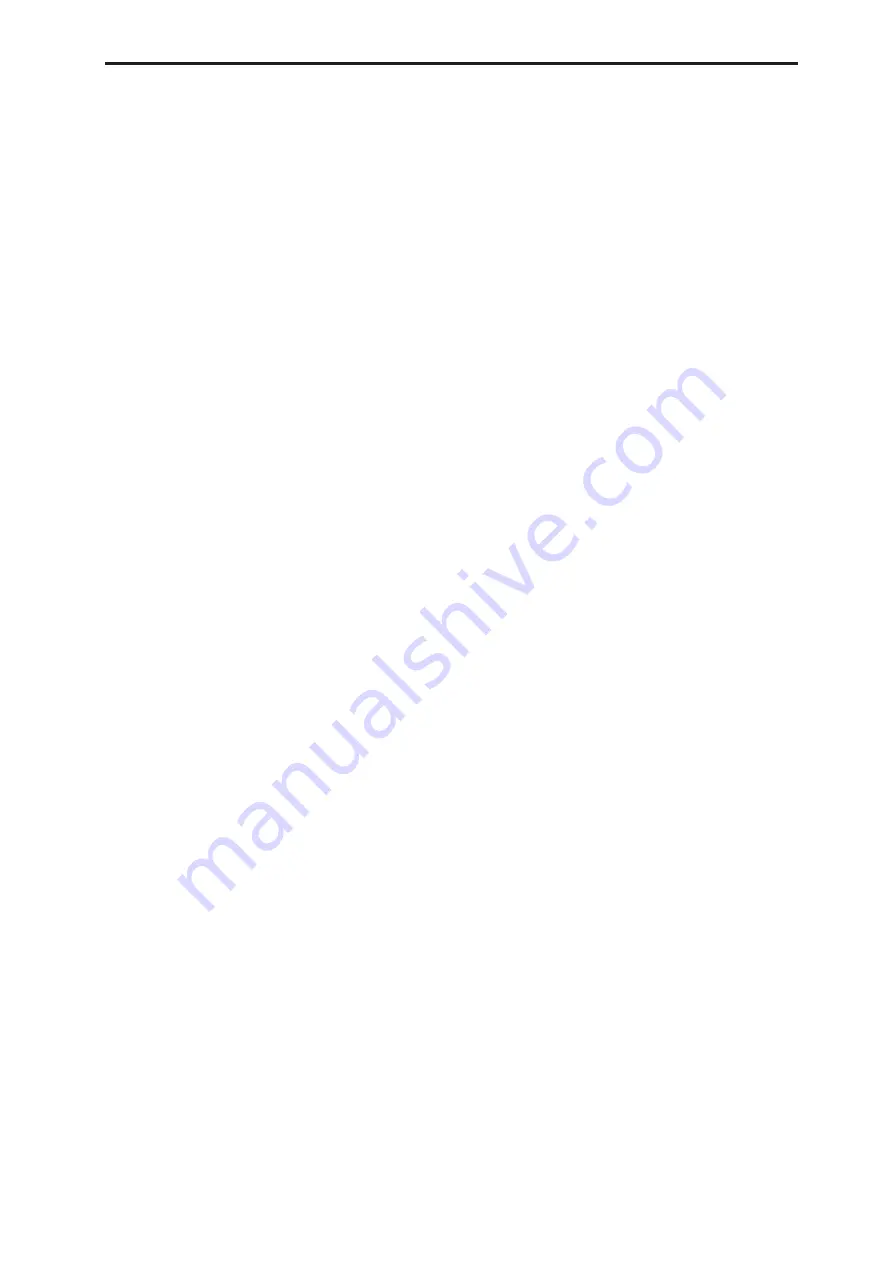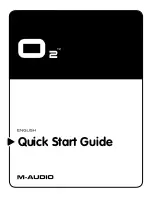
Alternate Modulation Sources (AMS) Alternate Modulation settings
973
• You can select Common LFO, LFO1 or 2 as the
AMS
, and use the LFO to control the resonance
level.
Output Level (Program 3–1b)
You can use the wave sequence’s AMS Out, EG, LFO,
keyboard tracking, controllers, or tempo etc. to control
the output level of Filter A/B.
• Set the Filter Routing to Parallel, and specify the
desired Type and other settings for Filter A and
Filter B. Set the
AMS
to LFO for Filter A and Filter
B, and set the LFO to +99 and –99 respectively. The
output of Filter A and Filter B will be cyclically
faded-in/out by the LFO.
Filter EG Intensity (Program 3–2b)
Filter EG intensity can be controlled by the Common
LFO, Common keyboard tracking, a controller or
tempo etc. You can use “Intensity to A” and “Intensity
to B” to independently specify the intensity for Filter A
and B.
• If you select JS –Y (CC#02) as the
AMS
and set
“Intensity to A” and “Intensity to B” to a positive
(+) value, moving the joystick in the –Y direction
will gradually increase the effect of the Filter EG. If
you set “Intensity to A” and “Intensity to B” to a
negative (–) value, the effect of the Filter EG will be
inverted.
• If you select Ribbon:CC#16 as the
AMS
and set
“Intensity to A” and “Intensity to B” to a positive
(+) value, operating the ribbon controller toward
the right will gradually increase the effect of the
Filter EG. Operating the ribbon controller toward
the left will gradually increase the effect of the
Filter EG with an inverted phase.
Filter LFO1/2 Intensity (Program 3–3a)
The LFO 1/2 filter modulation intensity can be
controlled by the wave sequence’s AMS Out, EG,
Common LFO, keyboard tracking, controller, or tempo
etc. You can use
Intensity to A
and
Intensity to B
to
independently specify the intensity for Filter A and B.
• If you select EG as the
AMS
, the auto-wah effect
produced by LFO modulation will be controlled by
the changes in EG level. If you set
Intensity to A
and
Intensity to B
to a positive (+) value, the wah
effect will deepen as the EG level rises, and will
lessen as the EG level falls. With negative (–) values
of
Intensity to A
and
Intensity to B
, the phase of
the LFO will be inverted.
• If you use a controller such as SW1 or 2 as the
AMS
, you can apply the auto-wah effect when
desired by pressing the SW1 or SW2 switch.
Filter Common LFO1/2 (Program 3–3b)
You can use the wave sequence’s AMS Out, EG, LFO,
keyboard tracking, controllers, or tempo etc. to control
the Common LFO filter modulation intensity. You can
use
Intensity to A
and
Intensity to B
to specify the
intensity separately for Filter A and B.
• You can set
AMS
to a controller, and operate the
controller only when desired to control the depth of
the filter sweep produced by the Common LFO.
Driver Drive (Program 4–1a)
Driver Low Boost (Program 4–1a)
You can use the wave sequence’s AMS Out, EG, LFO,
keyboard tracking, controllers, and tempo etc. to
control the driver’s boost and low boost. Although you
can use separate AMS to control these two parameters,
it is also effective to control them simultaneously by
using controllers such as the REALTIME KNOB. (It is
particularly effective to control the filter resonance at
the same time. This is also nice for synth bass sounds.)
• If you set
AMS
to Knob Mod.5, and set “Intensity”
to a positive (+) value, turning REALTIME KNOB 5
toward the right will raise the drive and low boost
level, and turning the knob toward the left will
lower these parameters. If you set “Intensity” to a
negative (–) value, the opposite result will occur.
• If you set
AMS
to Common LFO, LFO 1, or 2, the
drive amount will be controlled cyclically by the
LFO.
Amp (Program 4–2b)
The volume can be controlled by the wave sequence’s
AMS Out, pitch/filter EG, Common LFO, controllers,
or tempo etc.
• If an EG or controller that changes with a positive
(+) value (EXT(+)) is selected as the
AMS
, setting
the “Intensity” to +99 will allow you to increase the
volume to a maximum of eight times that of the
current volume.
• If an EG, LFO, or controller that changes with a ±
value (Pitch EG, Filter EG, LFO, KT, EXT(+–) is
selected as the
AMS
, setting the “Intensity” to +99
will allow you to increase the volume to a
maximum of eight times that of the current volume
(for positive (+) changes of the
AMS
), or to
decrease the volume to zero (for negative (–)
changes of the
AMS
).
• In addition to the time-variant changes in volume
produced by the amp EG, you can also make the
volume change in synchronization with the
pitch/filter EG. Select Pitch EG or Filter EG as the
AMS
, and adjust “Intensity.” If you wish to cancel
the effect of the Amp EG and use the pitch/filter
EG to control the volume, set all levels of the Amp
EG to +99.
Amp LFO1/2 Intensity (Program 4–2c)
The amp modulation intensity of LFO 1/2 can be
controlled by the wave sequence’s AMS Out, EG,
Common LFO, keyboard tracking, controllers, or
tempo etc.
• If you select EG as the
AMS
, the depth of the
tremolo effect produced by LFO modulation will
change in synchronization with the changes in EG
level. If you set “Intensity” to a positive (+) value,
the tremolo effect will deepen as the EG level rises,
and lessen as the EG level falls. If “Intensity” is set
to a negative (–) value, the phase of the LFO will be
inverted.
• If select a controller such as SW1 or 2 as the
AMS
,
you can apply the tremolo effect by pressing the
SW1 or SW2 switch when desired.
Summary of Contents for Electronic Keyboard
Page 1: ...Parameter Guide Parameter Guide ...
Page 2: ......
Page 180: ...Program mode EXi 170 ...
Page 290: ...EXi STR 1 Plucked String 280 ...
Page 572: ...Sequencer mode 562 ...
Page 700: ...Global mode 690 ...
Page 751: ...Insert Effects IFX1 IFX12 Routing 741 Fig 2 3a Fig 2 3b ...
Page 902: ...Effect Guide 892 ...
















































